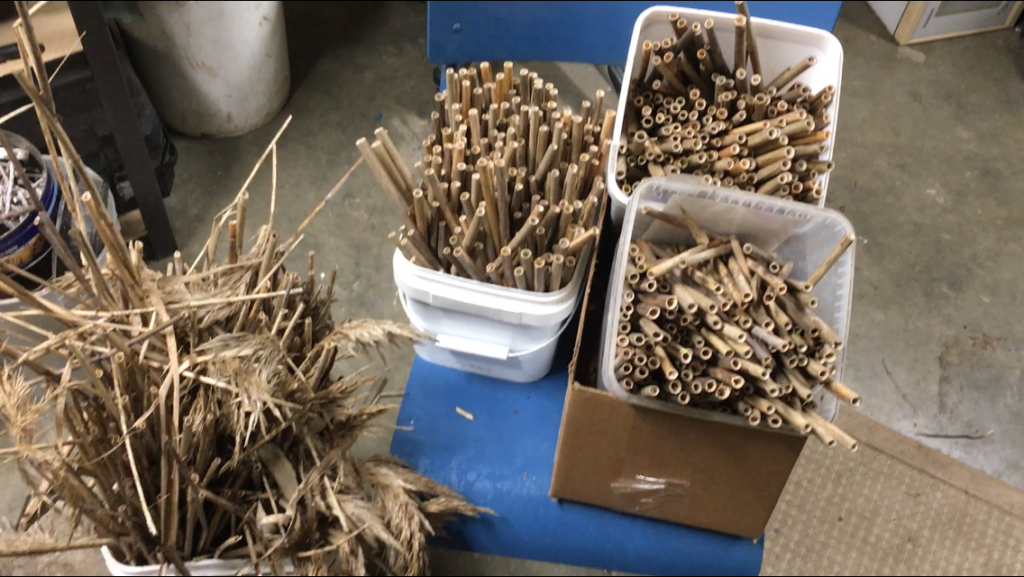Also phragmites reed grass tubes which may be ordered on line are noted
If you are concerned about storage over winter you can also pre-order and pay now… for pickup in February 2024;
Also phragmites reed grass tubes which may be ordered on line are noted
If you are concerned about storage over winter you can also pre-order and pay now… for pickup in February 2024;
Glyphosate, the active ingredient in Roundup, is one of the most commonly used herbicides in the world by commercial gardeners. However, many pesticides – including insecticides, fungicides, and herbicides – harm pollinators and other beneficial insects.
 To help educate those in the farming and gardening industries about this toxic chemical, drugwatch.com has created a comprehensive guide with organic, and homemade; and a second guide with agricultural alternatives. please take a look:
To help educate those in the farming and gardening industries about this toxic chemical, drugwatch.com has created a comprehensive guide with organic, and homemade; and a second guide with agricultural alternatives. please take a look:
drugwatch.com/roundup/
Glyphosate
Glyphosate is an herbicide used to kill weeds. It’s the active ingredient in Roundup and other weed killers, and can cause a variety of side effects. Recent lawsuits have claimed exposure to glyphosate in Roundup has led to certain cancers, including non-Hodgkin lymphoma.Alternatives to Roundup
See the article at this link:
https://www.drugwatch.com/roundup/alternatives/
Roundup products contain glyphosate, a chemical linked to cancer and other illnesses. Chemical alternatives to Roundup can also contain toxic ingredients, but safe alternatives to Roundup include soap, vinegar, salt or iron-based sprays, mulching and integrated weed management.
==========================================================
 Also this article explains the problem with pollinators and Roundup:
Also this article explains the problem with pollinators and Roundup:
===============================================================
The cleaning out of the phragmites tubes in the fall produced some new and interesting species of mason bees and leaf-cutter bees. These small pollinators prefer the small diameter phragmites tubes
The first sample here, a very tiny wasp in a woolly cocoon has been identified by iNaturalist as a Club-horned wasp Subfamily Sapyginae.. I don’t know yet if these are pollinators but I suspect they are .
The next one was a half sized mason bee which came from the silvery meshed cocoons:
Similar in size is a very bronze coloured mason bee, from similar silvery meshed cocoons:
Very different cocoons are these mud encased cocoons.. I have isolated a few of these tubes to see what emerges when they hatch, so I will add photos later here
Also appearing in the phragmites tubes are leaf-cutter bees.. photos to come later
Recently there is a concern in the Pacific Northwest about an invasive species, the Houdini Fly (Cacoxenus indagator) . which is a kleptoparasite which invades mason bee homes and destroys the developing larvae and source of food pollen.
Brian Guzda of Brian’s Mason Bees (https://www.instagram.com/briansmasonbees/?hl=en ) provided this picture. Note that the white maggots are not contained within the cocoon as they are with the Mono wasp, another kleptoparasite which I profile in other posts here. It is essential to clean out whatever kind of tubes your mason bees have capped any time from October to December in order to catch these flies before they mature and cause further damage. 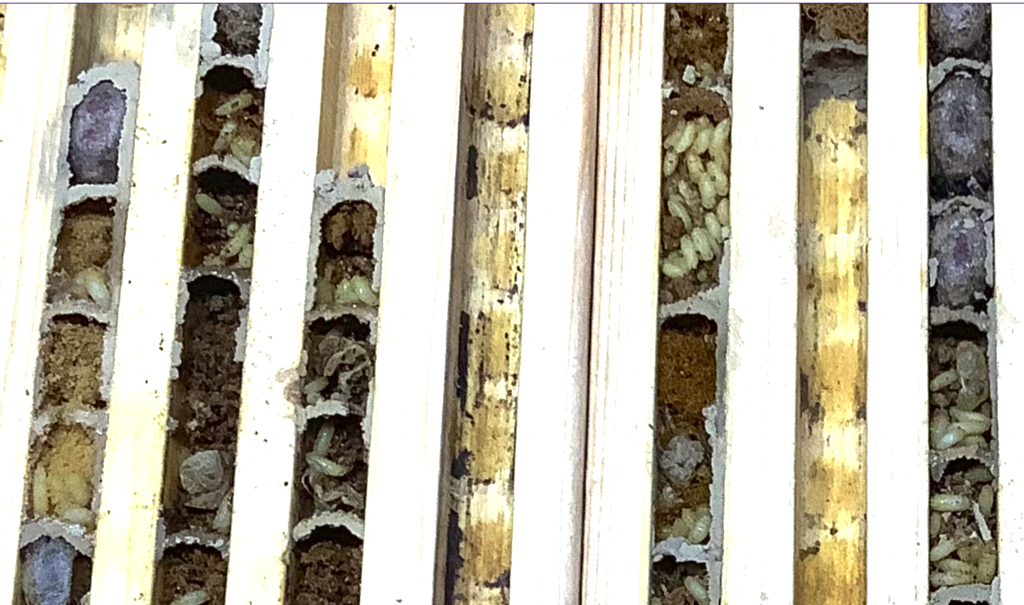
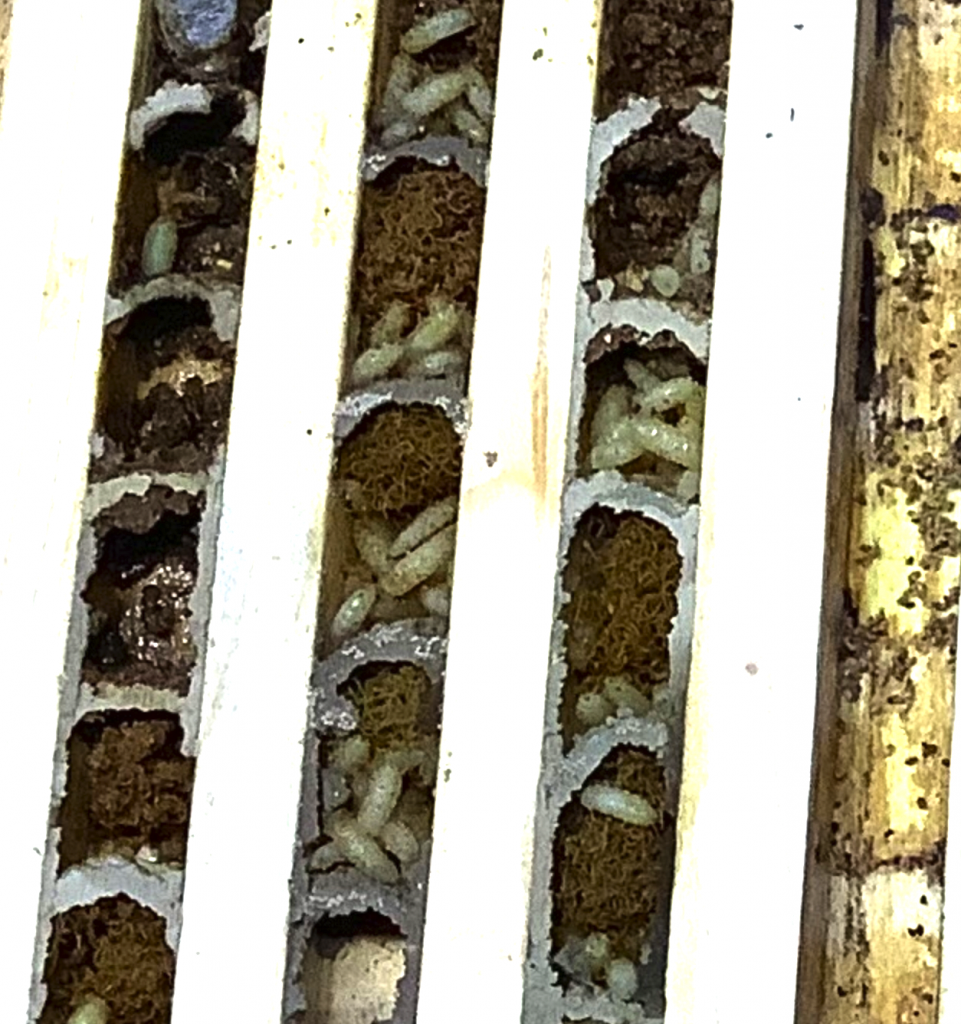
The following video gives more information about this invasive species and emphasizes the importance of taking good care of your bees.
I was fortunate to have on our property, a brackish water estuarine marsh in which grows the native Phragmites sp. reed grass.
See this file on the Gooch creek swamp which tells the story of how I had to “save” the Reed Grass beds from extirpation by the BC Forest Lands and Natural Resources Department: (FLNRO)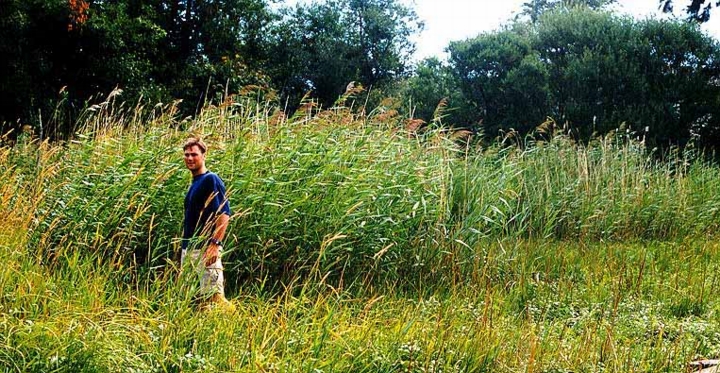 From Phragmites australis (Cav.) Trin. ex Steud. subsp. americanus I get the hollow tubes that I use for the mason bee homes. This is what they look like in late summer.
From Phragmites australis (Cav.) Trin. ex Steud. subsp. americanus I get the hollow tubes that I use for the mason bee homes. This is what they look like in late summer.
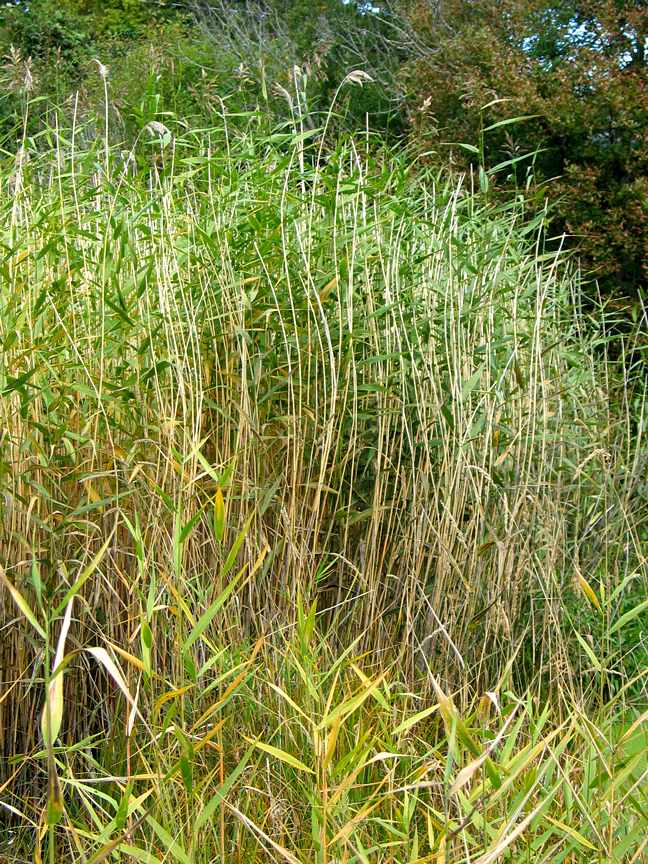
In about 1 in 20 plants, the stems are the ideal size for Mason Bees.
The tubes are cut in the early spring from the lower 1 metre of the stems.
The internode lengths range from 15 cm. to 30 cm . I select only those sections with an adequate tube diameter. 5/16 ” diameter is ideal.
Since this reed grass is not generally available, it is easiest to sandwich small plates of wood with 5/16″ channels routered or sawn into them . There are many references on the internet that show how to do this.
See this post on Harvesting and Cleaning the Mason Bees in the fall.

The past season was not a good one for mason bees on southern Vancouver island. Cool temperatures delayed hatching and there was poor fertilization in some of the locations . I had mason bee houses stocked with Phragmites tubes and mason bee cocoons in eight different farms of neighbours.
As I have been cleaning out the tubes and getting the cocoons in the refrigerator for storage, I have noticed a significant increase in a species of native mason bee that is much smaller than the native blue orchard bees.
Another interesting observation. was that at the bottom of the tube below the cocoons in several tubes there was a pocket of the dead but hatched parasitic mono wasps.. I cant explain that one (my best hopes would be that this smaller mason bee cocoon has some super power over the parasitic wasps…lol)
Cindy, one of my regular mason bee customers has had to move East and she was so dedicated to her mason bees that she left them with me to look after. She had run a small experiment in her bee box that I thought would be useful to comment on here.
Today I opened the tubes to remove the Cocoons for storage over winter in the refrigerator.
On first glance, the plastic containers appear to have a good number of successful plugged tubes. When the plastic containers were opened however, it was obvious that mites had taken a large toll on the cocoons:
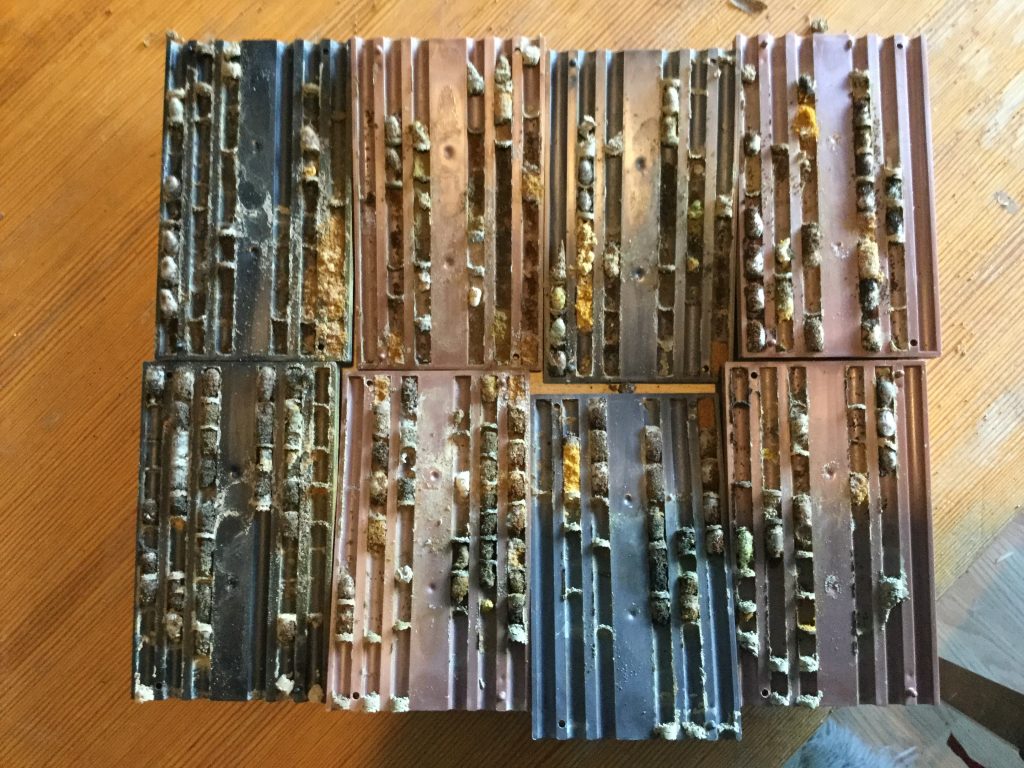
I was interested in comparing the productivity of the phragmites tubes versus the plastic tubes so I kept track of the number tubes, the number of cocoons and the number of tubes with parasitic mites. Here are the results:
Number of plastic tubes: 24 — Number of phragmites tubes: 18
Number cocoons in plastic=108 — Number cocoons in phrag= 91
Ave. number -plastic tube=4.5—-Average number-phrag.tube =5
Mite-infected-plastic tubes=14 —- Mite-infected-phrag. tubes=2
So it appears from this small sample that the Phragmites tubes produced more cocoons and had fewer mite infestations.
NOTE : I have created this post in order to place it closer to the recent mason Bee posts
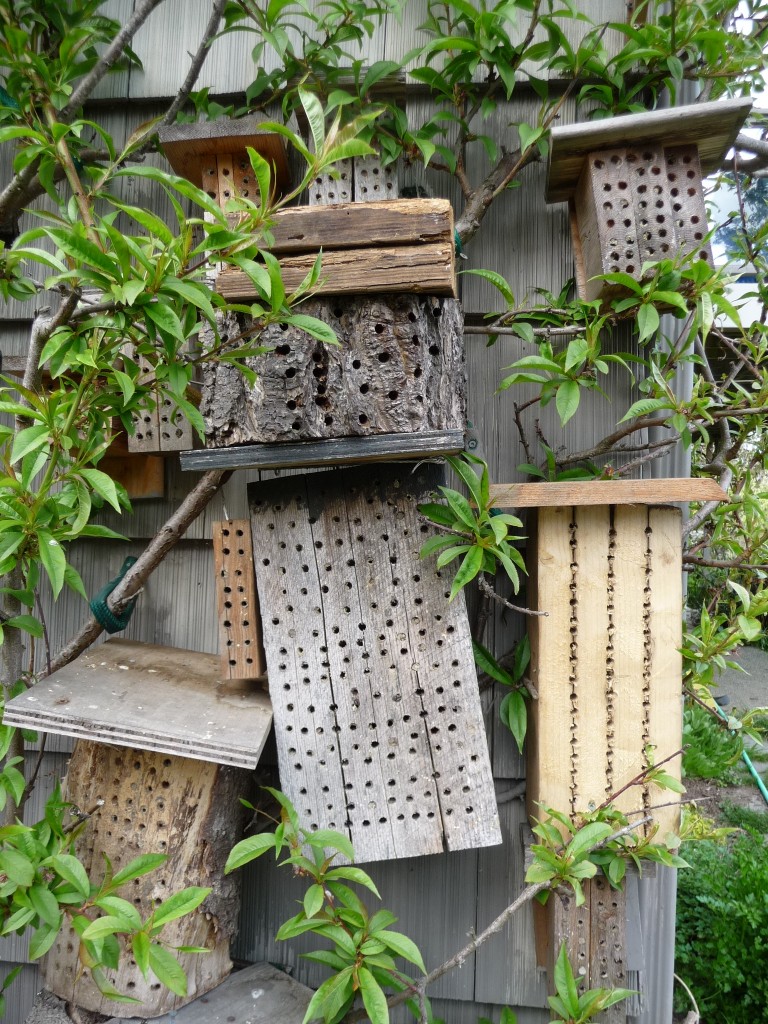
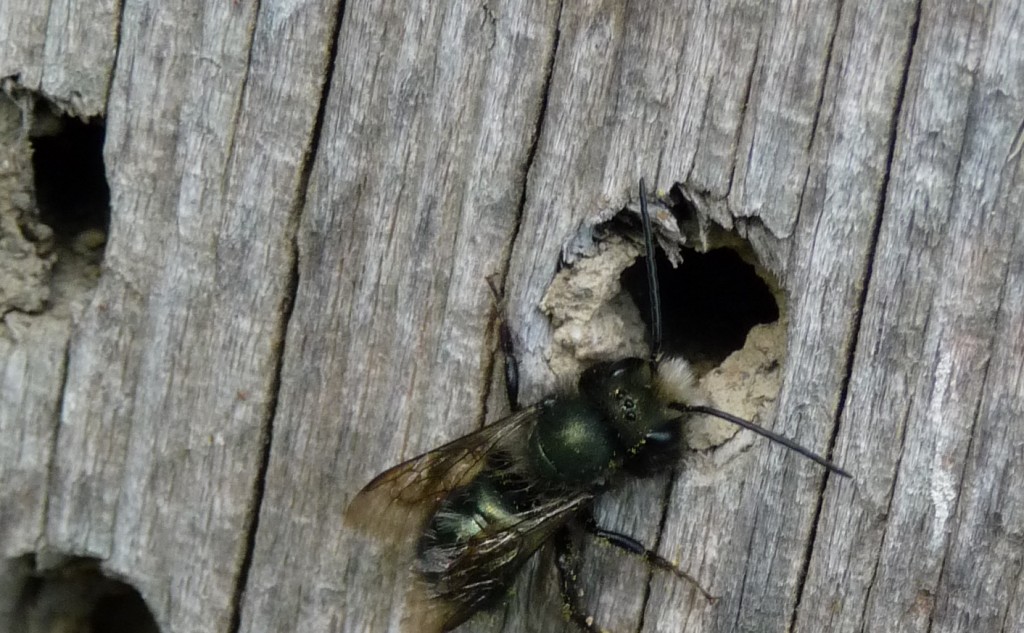
2012 was the last year I used the mason bee colonies that were just holes bored in various experimental pieces of wood. I had attached these on the house, just behind a peach tree . They looked crude but were responsible for collecting from the wild my starter colony of mason bees. The main disadvantage however was that I could not clean these out, and parasites would take their toll each year. It is a good idea to get rid of these if you have used them so that you do not increase the parasites over the years.
UPDATE : We now call mason bee homes like this MASON BEE MORGUES
In January and February I harvest the native reed grass tubes from the seasonally flooded estuary on on my property. It is important to do this now before any new shoots start to emerge, as trampling could wipe out the reed bed. Trampling by livestock has probably been the cause of the elimination of the native Phragmites sp. from other estuaries on Vancouver Island.
Diving into the base of the reeds to cut out the one in 100 or so stems which will be large enough to provide mason bee tubes.
Stacking up the cut reeds from the swamp
Carrying the bundle to my house for cutting.
Cutting the Phragmites reeds near the nodes to produce the tubes for the mason bees.
